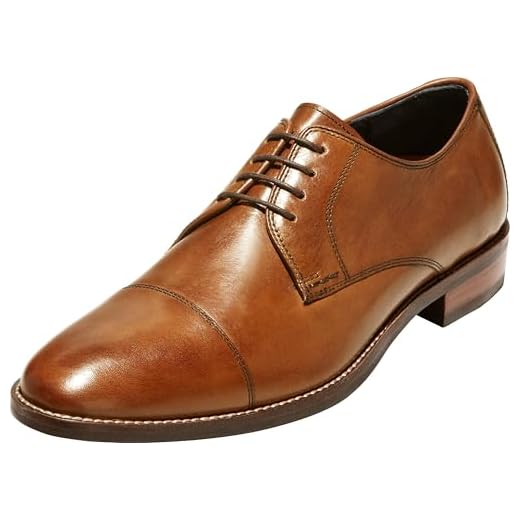The Tan Oxford: Why This Classic Shoe Is a Must-Have for Effortless Style
Unlock effortless style with the versatile tan Oxford shoe. This comprehensive guide covers everything from its history and construction to expert tips on styling and care.
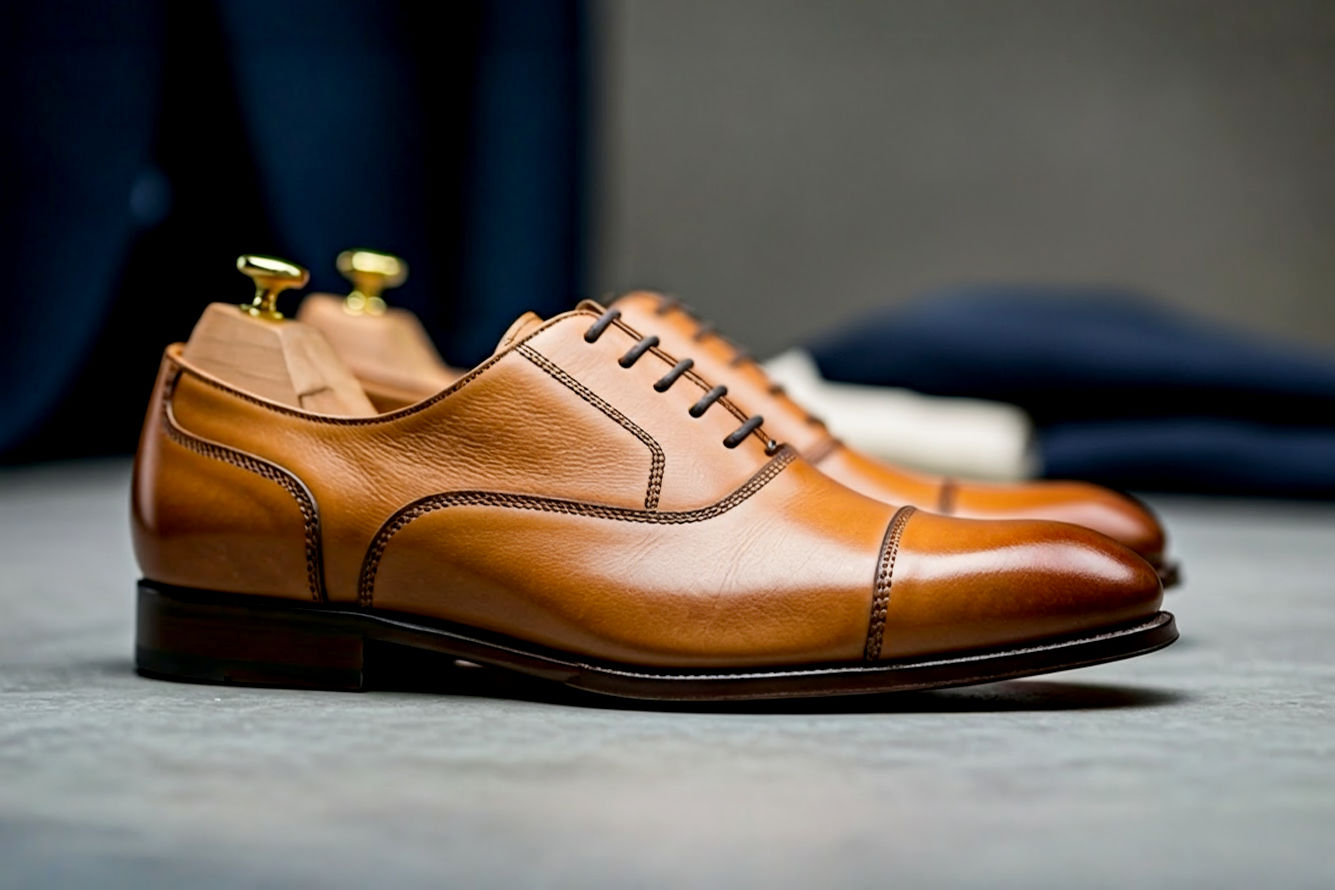
This post may contain affiliate links. If you make a purchase through these links, we may earn a commission at no additional cost to you.
Introduction: The Undeniable Appeal of the Tan Oxford
Step into any well-dressed person’s closet, and you’ll likely find a pair of tan Oxford shoes. This isn’t just by chance; it’s because these shoes have an undeniable appeal that’s truly timeless. They represent a perfect blend of tradition, craftsmanship, and modern versatility. For anyone looking to build a wardrobe that exudes effortless style, the tan Oxford isn’t just an option; it’s a fundamental piece.
Cole Haan Men's Shoes-Lenox Hill Cap Toe Oxford, British Tan, 8 UK
-
High-Shine Upper: Features a sleek leather upper polished to a sophisticated high-shine finish.
-
Convenient Slip-On: Designed for ease and convenience with a slip-on construction that includes flexible elastic side inserts.
-
Full Leather Lining: Lined entirely with leather to ensure a comfortable fit and breathable interior.
-
Durable Sole: Built on a practical combination synthetic and rubber sole for reliable, all-day traction.
-
Elegant Lift: Finished with a mini stacked heel that provides a subtle, classic lift.
A Brief Look at a Timeless Icon
The Oxford shoe itself boasts a rich history, evolving from a simple boot in 17th-century Scotland and Ireland into the sophisticated dress shoe we know today. Over centuries, it cemented its status as a cornerstone of men’s formal and business attire. But while black and dark brown Oxfords often take the spotlight for strict formality, the tan Oxford offers something more nuanced. It’s a shoe that says you appreciate classic style but aren’t afraid to add a touch of modern flair and approachability.
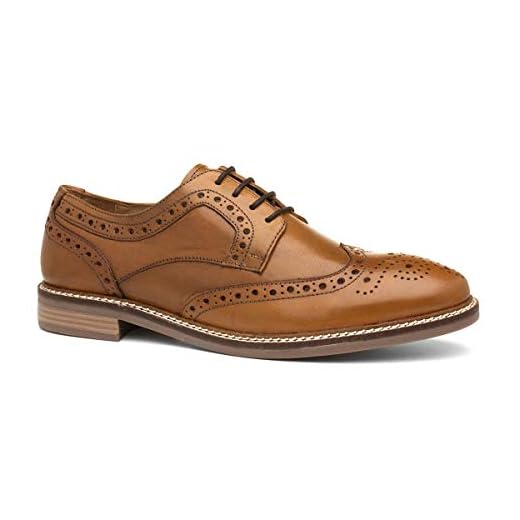


Why Tan? Understanding its Unique Versatility
What makes the tan Oxford so special, distinguishing it from its darker counterparts? It’s all about its unique color. Tan, being a lighter, warmer neutral, offers an incredible range of styling possibilities that darker shoes just can’t match. It can brighten up a formal suit, making it feel less stuffy, or elevate a casual outfit, giving it a polished edge. It’s this chameleon-like ability to adapt to almost any wardrobe choice – from sharp business suits to relaxed weekend denim – that makes the tan Oxford an absolute must-have for anyone aiming for truly effortless style. It’s not just a shoe; it’s a statement of sophisticated adaptability.
Understanding the Oxford Shoe: More Than Just a Look
Before diving deeper into the specific charm of the tan Oxford, it’s important to understand what makes an Oxford, well, an Oxford. This isn’t just any lace-up shoe; it has distinct characteristics that set it apart, particularly its lacing system. Understanding these details helps us appreciate its design and why it holds such a revered place in footwear.

Defining the Oxford: Closed Lacing System Explained
The defining feature of an Oxford shoe is its closed lacing system. This means the eyelet tabs, where the shoelaces pass through, are sewn underneath the vamp, which is the front part of the shoe that covers the top of your foot. This creates a sleek, clean, and streamlined appearance across the instep. The stitching is typically tight and neat, contributing to the shoe’s inherently formal aesthetic.
What is a Closed Lacing System? (Technical Explanation)
In technical terms, the closed lacing system is achieved by integrating the quarters (the sections of the upper that wrap around the heel and meet in the middle to form the eyelet tabs) beneath the vamp. Imagine the vamp as a single piece of leather that extends from the toe box back towards the ankle, and the eyelet tabs as separate pieces that are then stitched onto the underside of this vamp. This construction prevents the eyelet tabs from flapping open wide, giving the shoe a very neat, close fit and a refined silhouette.
When you lace up an Oxford, the two sides of the lacing system meet closely, often leaving only a narrow gap, which enhances its formal appearance. This contrasts sharply with shoes like the Derby, which feature an open lacing system where the eyelet tabs are sewn on top of the vamp, allowing for a wider opening and a more casual feel.
A Rich History: From Collegiate Halls to Boardrooms
The Oxford shoe’s origins trace back to the early 19th century, evolving from the “Oxonian” boot popular among students at Oxford University. These ankle-high boots featured side slits for comfort, a revolutionary design at the time. Over time, the boot’s height decreased, and the side slits morphed into a practical lacing system, eventually becoming the low-cut, sleek shoe we recognize today.
By the mid-19th century, the Oxford had become a staple of academic and professional attire, symbolizing intelligence, discipline, and refined taste. Its journey continued through the 20th century, cementing its place in boardrooms, formal events, and elegant social gatherings worldwide. It truly represents a piece of sartorial history that continues to influence modern fashion.
Key Features and Construction of a Quality Oxford
Beyond the lacing, a quality Oxford shoe involves several key components and careful construction. These elements contribute to its durability, comfort, and overall aesthetic appeal. Understanding them helps in appreciating a well-made pair.
Anatomy of an Oxford: Sole, Upper, Heel, and Insole
Every Oxford shoe is a sum of its well-crafted parts. The upper is the main body of the shoe, typically made from leather, which covers the foot. This is where the characteristic closed lacing system is found. The sole is the bottom-most part, providing grip and protection; it can be made of leather or rubber. The heel lifts the back of the foot and provides balance, often consisting of multiple layers of leather or wood. Inside, the insole provides cushioning and support directly under the foot, while the outsole is the visible part of the sole that touches the ground. The way these parts are designed and joined together dictates the shoe’s quality and longevity.
Common Oxford Styles: Plain Toe, Cap Toe, Wingtip, Wholecut
While the closed lacing system defines an Oxford, there are several distinct styles, each offering a slightly different aesthetic:
- Plain Toe Oxford: This is the simplest and most formal Oxford. Its vamp is made from a single piece of leather, with no decorative stitching or patterns on the toe. This minimalist design makes it incredibly sleek and versatile for formal occasions.
- Cap Toe Oxford: Arguably the most popular and versatile style, the cap toe features a horizontal seam across the toe box, creating a distinct “cap.” This subtle detail adds visual interest without sacrificing formality, making it ideal for both business and dressier casual wear.
- Wingtip Oxford (or Brogue): Recognized by its “W” or “M” shaped toe cap, which extends along the sides of the shoe like wings. These shoes are often adorned with decorative perforations (broguing). The more broguing, the more casual the shoe typically becomes. Tan wingtips are particularly popular for their stylish flair.
- Wholecut Oxford: This is the most formal and challenging Oxford to make. The entire upper is crafted from a single, seamless piece of leather. This requires a large, flawless hide and exceptional skill from the shoemaker, resulting in a remarkably elegant and refined look. Its minimalist design makes it stunningly beautiful, showcasing the quality of the leather.
Understanding these styles and the underlying construction helps you choose the perfect tan Oxford for your specific needs, ensuring both timeless style and lasting quality.
The Power of Tan: Unlocking Unmatched Versatility
The true magic of the tan Oxford lies in its color. While black and dark brown are traditional staples, tan offers a refreshing alternative that unlocks a surprising level of versatility. It’s a color that can effortlessly bridge the gap between formal and casual, making it an incredibly valuable addition to any wardrobe.
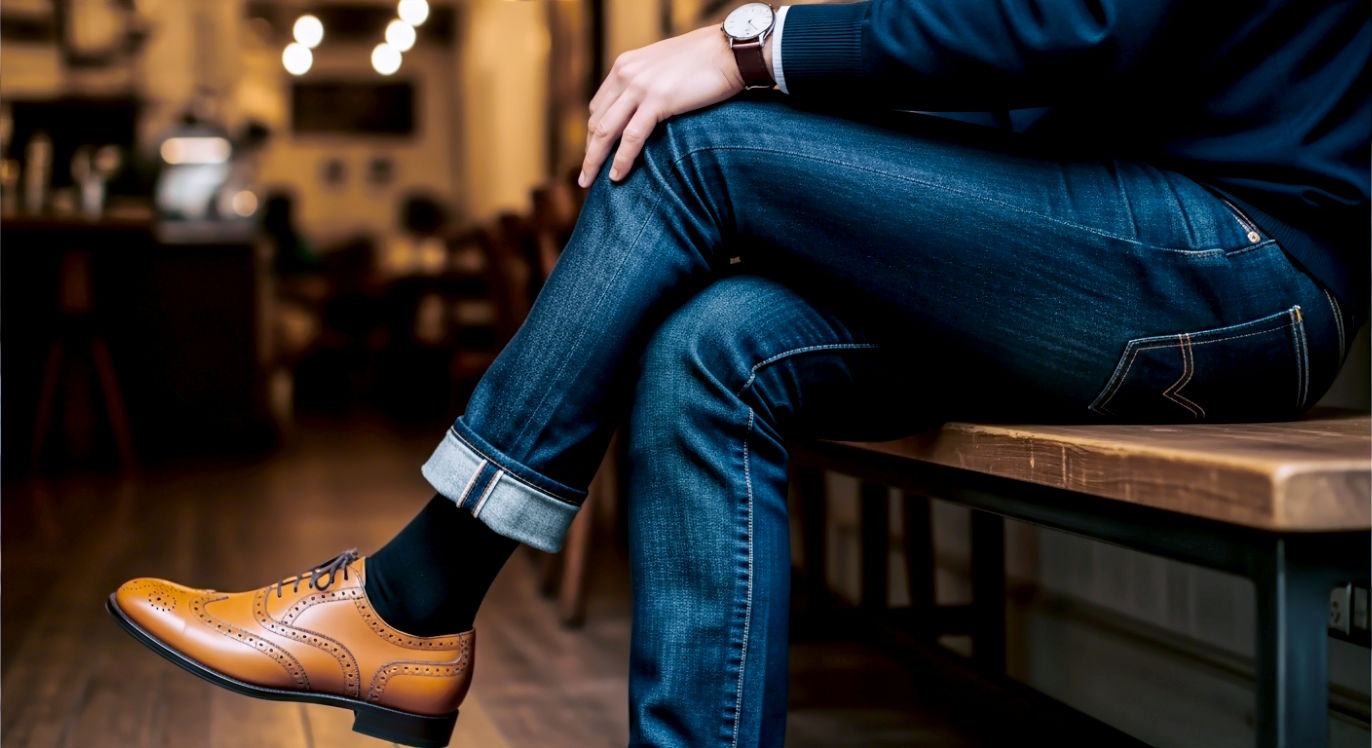
Tan as a Neutral: Adapting to Any Palette
Tan isn’t just a shade of brown; it’s a sophisticated neutral. Think of it less as a bold color statement and more as a warm, earthy foundation that can complement a vast array of colors without clashing. This makes it an incredibly adaptable shoe for various outfits and occasions. Its lightness and warmth prevent it from being too heavy or somber, allowing it to integrate seamlessly into brighter palettes while still holding its own against darker ones.
The Warmth of Tan: Complementing Skin Tones and Fabrics
The inherent warmth of tan leather has a unique ability to flatter many skin tones, adding a subtle glow rather than a harsh contrast. This warmth also plays beautifully with a wide range of fabric textures and colors. It harmonizes exceptionally well with blues, greys, greens, and even some darker reds, creating a cohesive and visually appealing ensemble.
Unlike stark black, which can sometimes appear too severe, tan offers a softer, more inviting look that feels approachable yet undeniably polished. This allows you to create more dynamic and interesting color combinations in your outfits.
Dressing Up: Elevating Formal Attire with Tan Oxfords
While some might traditionally reserve tan for less formal occasions, the right shade and style of tan Oxford can absolutely elevate formal attire, injecting personality and modern sensibility without sacrificing professionalism. It’s about choosing the right balance and confidence.
Business Professional: Suits and Separates
For business professional settings, a pair of polished tan cap-toe or plain-toe Oxfords can instantly refresh your look. They pair exceptionally well with classic suit colors. A navy blue suit with tan Oxfords creates a sharp, modern contrast that’s sophisticated and stylish. The warmth of the tan beautifully complements the cool tones of navy.
Similarly, grey suits, from charcoal to light grey, also benefit from the addition of tan Oxfords. Light grey offers a crisp, clean look perfect for warmer months, while darker greys provide a smart contrast that’s still formal but less predictable than black shoes. You can also pair them with separated trousers and blazers, like navy trousers and a grey sport coat, for a business-casual professional look.
Formal Events: When Tan Breaks the Rules (and When it Doesn’t)
For very formal events, like black-tie galas or highly traditional weddings, black patent leather Oxfords or opera pumps remain the undisputed standard. However, for less rigid formal occasions, such as daytime weddings, garden parties, or business dinners where a dark suit is worn but not strictly black tie, tan Oxfords can be a fantastic choice. They lend an air of relaxed sophistication.
For example, wearing them with a well-tailored blue or grey suit at a summer wedding can create a memorable and elegant impression. Just remember, avoid tan Oxfords with truly black suits; the contrast is usually too stark and visually jarring for formal settings. The key is understanding the dress code and the overall formality of the event.
Dressing Down: Mastering Smart Casual with Tan Oxfords
This is where the tan Oxford truly shines and demonstrates its unmatched versatility. It’s the perfect shoe to bridge the gap between overly casual sneakers and overly formal dress shoes, providing a polished yet approachable vibe.
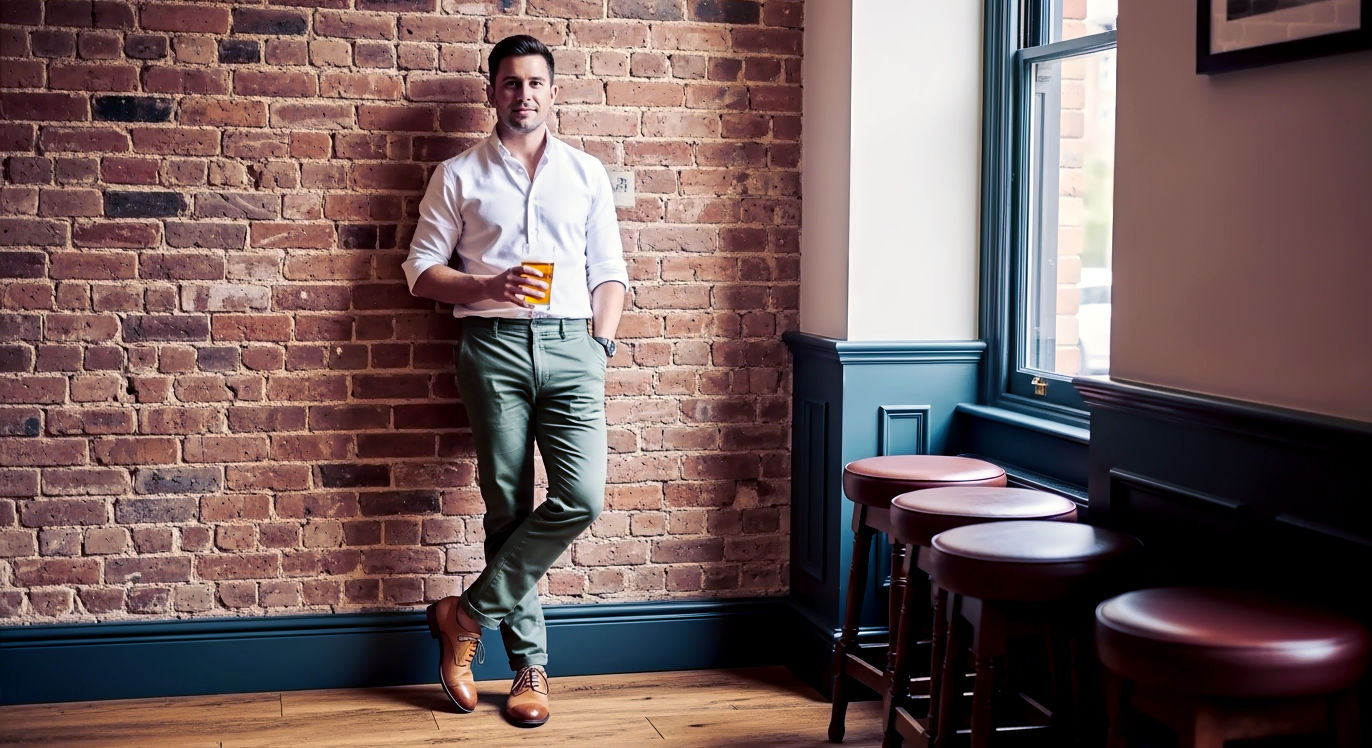
Elevated Casual: Chinos, Khakis, and Sweaters
The tan Oxford is an ideal partner for elevated casual wear. Pair them with well-fitting chinos or khakis in shades like navy, olive, or even burgundy. This combination immediately elevates the look from simple casual to smart casual. Add a crisp button-down shirt, a polo, or a fine-gauge sweater, and you’ve got an outfit that’s perfect for weekend outings, casual Fridays at the office, or dinner with friends.
The tan color brings a warmth and sophistication that a sneaker simply can’t provide, showing attention to detail without looking like you’re trying too hard.
Denim Pairings: A Surprising but Stylish Match
While it might seem counterintuitive to pair dress shoes with denim, the tan Oxford is one of the few exceptions that genuinely works. The trick is to choose the right kind of denim: opt for dark-wash, well-fitting jeans (straight-leg or slim-fit are usually best) without any rips or excessive distressing.
A cap-toe or wingtip tan Oxford can give your denim outfit an unexpected twist of sophistication, transforming it from purely casual to deliberately stylish. Pair them with a fitted t-shirt, a casual button-down, or a light sweater for a look that’s comfortable yet refined. It’s a fantastic way to elevate your weekend wardrobe.
Seasonal Adaptability: Wearing Tan Oxfords Year-Round
One of the great advantages of the tan Oxford is its ability to transition seamlessly across seasons. Its color and style are neither too heavy for summer nor too light for winter, making it a truly year-round shoe.
Spring and Summer: Lightness and Sophistication
During the warmer months, the lighter shade of tan naturally complements lighter fabrics and brighter color palettes. Tan Oxfords look fantastic with linen suits, cotton chinos, or even tailored shorts (if the occasion allows). They bring a sense of airiness and sophistication that a darker shoe would simply overpower. Think of them with a light blue linen shirt and cream chinos for a perfect summer evening look. The tan adds a touch of sun-kissed warmth.
Fall and Winter: Adding Warmth and Depth
As the weather cools, the tan Oxford continues to be a strong contender. Its warm tones can add depth and richness to fall and winter outfits. Pair them with tweed blazers, wool trousers, or even corduroy. They stand out beautifully against darker fabrics like charcoal wool or deep navy, providing a welcome pop of color and warmth.
You can layer up with sweaters and scarves, and your tan Oxfords will anchor the look with sophisticated style. They truly are a shoe for all seasons, proving their worth no matter the climate.
Choosing Your Perfect Tan Oxford: A Guide to Quality and Comfort
Selecting the right tan Oxford isn’t just about color; it’s about investing in quality, comfort, and longevity. A well-made shoe will not only look better but also last for years, making it a smart investment for your wardrobe. Understanding the materials and construction methods is key to making an informed choice.
Mezlan Republic – Mens Luxury Dress Shoes – European Calfskin with Hand Finishes – Handcrafted in Spain – Medium Width, Tan, 12

Leather Types: Understanding the Materials
The material of the shoe’s upper dramatically impacts its appearance, durability, and how it ages. When it comes to quality Oxfords, leather is almost always the material of choice, but not all leathers are created equal.
Full-Grain Leather: The Gold Standard
Full-grain leather is widely considered the highest quality leather available for footwear. This is because it retains the natural grain of the hide, including all its imperfections and unique textures. It hasn’t been sanded or buffed to remove marks, meaning it’s incredibly durable and develops a beautiful “patina” over time—a soft sheen that comes with age and wear. This patina adds character and depth to the tan color, making the shoes look even better with time.
Full-grain leather is also highly breathable, making it more comfortable for extended wear. Its dense fibers mean it’s strong and resistant to tearing, though it will show minor scratches and scuffs over time, which often just add to its charm.
Top-Grain Leather and Corrected-Grain Leather
Below full-grain, you’ll find top-grain leather. This is similar to full-grain, but the very top layer, including imperfections, has been lightly sanded or buffed away. While still high quality and durable, it won’t develop the same rich patina as full-grain. It’s more uniform in appearance but slightly less breathable.
Corrected-grain leather (sometimes called “patent leather” if highly finished) is leather that has been heavily sanded, buffed, and often embossed with a fake grain pattern to mask imperfections. It’s then coated with a pigment or finish. While it can be more resistant to stains and water, it lacks the breathability and natural aging qualities of full-grain and top-grain leather. It’s generally used for more budget-friendly or purely aesthetic shoes.
Suede and Other Alternatives (Briefly)
While leather is dominant, some tan Oxfords might also be found in suede, a soft, napped leather. Suede Oxfords offer a more casual, textured look. They are less formal than smooth leather Oxfords and require different care. Other synthetic alternatives exist, but for a classic, long-lasting tan Oxford, genuine leather, especially full-grain, is the way to go.
Construction Methods: Durability and Longevity
The way a shoe is constructed is arguably as important as the material of its upper. Different construction methods dictate the shoe’s durability, flexibility, and whether it can be easily repaired or resoled.
Goodyear Welt Construction: The Pinnacle of Durability (Technical Explanation)
The Goodyear welt construction is renowned as the gold standard for high-quality footwear. This method involves stitching a strip of leather (the “welt”) around the perimeter of the upper, to which both the upper and the insole are attached. Then, the outsole is stitched to this welt. This complex, multi-step process creates an incredibly sturdy and water-resistant shoe.
Lethato Handmade Brogue Oxford Goodyear Welted Genuine Leather Lace up Dress Shoes brown Size: 13
-
Premium Materials: Expertly handcrafted from a full-grain calfskin leather upper and features a complete leather lining.
-
Goodyear Welt Construction: Built using the durable Goodyear welting process, making the shoe highly water-resistant and recraftable for years of wear.
-
Artisan Sole: Features a hand-built, high-quality Argentinean leather sole for a classic and refined foundation.
-
Timeless Style: Designed with elegant brogue features and classic perforation details on the toe.
-
Custom Comfort: Molds to the shape of your foot with regular wear, providing a custom fit that’s comfortable for long hours or travel.
Technically, a rib is created on the lasting insole. The upper, the lining, and the welt are then sewn to this rib using a chain stitch. This forms the “welt seam.” After the sole is attached, a second stitch (the “sole stitch”) attaches the outsole to the welt. The space between the insole and the outsole is filled with cork, which molds to the wearer’s foot over time, providing custom comfort.
The key advantage of this method is that the outsole can be removed and replaced multiple times without damaging the upper, effectively extending the life of the shoe for decades. This means your tan Oxfords can be resoled repeatedly, making them a truly sustainable investment.
Blake Stitch Construction: Flexibility and Sleekness
The Blake stitch construction offers a sleeker and more flexible alternative. In this method, the upper is directly stitched to the insole and then to the outsole using a single stitch that goes through all layers. This process results in a shoe with a much thinner sole and a more flexible feel right out of the box. While Blake-stitched shoes can also be resoled, it’s a more challenging process than with Goodyear welted shoes, as the stitching goes directly through the insole. They are generally less water-resistant but offer a more elegant, lightweight profile, which can be desirable for a dressier tan Oxford.
Cemented Construction: Entry-Level and Lightweight
Cemented construction (also known as “glued construction”) is the most common and least expensive method. Here, the upper is simply glued to the sole. While this method results in a very lightweight and flexible shoe, it offers the least durability and typically cannot be resoled. Once the sole wears out, the entire shoe usually needs to be replaced. For a shoe intended to be a long-term wardrobe staple like the tan Oxford, cemented construction is generally avoided by discerning buyers who prioritize longevity.
Fit and Comfort: The Foundation of a Good Shoe
No matter how stylish a shoe is, if it doesn’t fit well, you won’t wear it. Comfort is paramount, especially for a shoe you plan to wear frequently.
Sizing Considerations: Length, Width, and Instep
Shoe sizing isn’t just about length; width and instep height are equally crucial. A shoe that is too narrow will pinch, while one that is too wide will cause your foot to slide, leading to blisters. The instep—the top part of your foot—also needs to fit comfortably under the lacing system. For Oxfords, a snug fit around the instep is important due to the closed lacing. Your toes shouldn’t touch the front of the shoe, and your heel shouldn’t slip significantly when you walk. It’s always best to try shoes on later in the day when your feet are slightly swollen to get the most accurate fit.
Breaking In Your New Oxfords: Tips for Comfort
Even with a perfect fit, new leather shoes, especially Goodyear welted ones, often require a “break-in” period. This is when the stiff leather molds to the unique shape of your foot. Start by wearing your new tan Oxfords for short periods, gradually increasing the duration. Wear thicker socks initially to provide cushioning. You can also use shoe stretchers to gently ease the process. Don’t expect immediate slipper-like comfort; quality leather needs time to conform. Patience during this phase will be rewarded with shoes that feel custom-made for your feet.
Key Brands and Where to Find Them (General Advice)
Many reputable brands offer high-quality tan Oxfords. When looking, consider brands known for their craftsmanship and use of premium materials. Brands like Allen Edmonds, Crockett & Jones, Loake, and Meermin are often cited for their Goodyear welted options. For more affordable yet still good quality Blake-stitched options, look at brands like Magnanni. Always read reviews and understand the brand’s sizing conventions. You can find these shoes at specialized shoe stores, department stores with dedicated men’s footwear sections, or reputable online retailers. Investing in a well-made pair means they’ll last longer and look better, making them a worthwhile part of your wardrobe.
Mastering the Style: Outfit Combinations and Complementary Accessories
The tan Oxford’s true value lies in its versatility. It seamlessly integrates into a wide array of outfits, from formal business attire to relaxed weekend wear. Mastering its styling means understanding how to pair it with different colors, fabrics, and accessories to create a cohesive and effortless look.

The Business Ensemble: Classic and Contemporary Looks
For professional settings, the tan Oxford offers a refreshing alternative to traditional black or dark brown. It introduces a subtle warmth and modernity without compromising professionalism.
Navy Suit and Tan Oxfords: A Winning Combination
This pairing is a modern classic for a reason. The deep, cool tones of a navy blue suit provide a striking yet harmonious contrast with the warm, rich hue of tan Oxfords. This combination is universally flattering and signals confidence and a keen eye for style. It’s suitable for most business environments, from daily office wear to client meetings and conferences. The tan shoes lighten the overall look of the suit, making it feel less severe and more approachable. Ensure your belt matches the tan of your shoes for a polished finish.
Grey Suit and Tan Oxfords: Sophisticated Contrast
Another excellent combination is a grey suit with tan Oxfords. For a light grey suit, the tan shoes create a bright, contemporary look perfect for spring or summer. With a darker charcoal grey suit, the tan provides a sophisticated contrast that adds visual interest. This pairing works well for business meetings, networking events, or any occasion where you want to appear refined yet distinct. The warmth of the tan prevents the grey from looking too stark or cold.
Brown and Earth Tones: Harmonious Pairings
While less common than navy or grey, a well-chosen brown suit or separates in earth tones can pair beautifully with tan Oxfords. Ensure the brown of the suit is a distinctly different shade from the tan of the shoes to avoid a monochromatic look that blends too much. A mid-brown tweed suit, for instance, paired with tan brogue Oxfords, evokes a sophisticated, heritage-inspired aesthetic perfect for fall. Olive green and forest green trousers or sport coats also complement tan Oxfords, creating a rich, earthy palette.
Smart Casual Mastery: Effortless Yet Polished
Beyond the boardroom, the tan Oxford excels in smart casual settings, offering a polished look without feeling overly formal. This is where its versatility truly shines.
Chinos and a Blazer: The Go-To Look
This is arguably the most quintessential smart casual pairing for tan Oxfords. Well-fitted chinos in colors like navy, olive, stone, or even burgundy, combined with a sharp blazer (wool, cotton, or linen) and a button-down shirt or a fine-knit sweater, create a polished yet relaxed ensemble. The tan Oxfords elevate the chinos from casual to smart, making the entire outfit look intentional and stylish. It’s perfect for weekend brunches, casual dinner dates, or creative office environments.
Dark Denim and a Button-Down: Weekend Chic
Yes, you can wear dress shoes with jeans, especially tan Oxfords. The key is to select dark-wash, well-fitting denim (avoid anything too baggy or distressed). Pair these jeans with a crisp button-down shirt (plaid, chambray, or plain white/blue) and perhaps a knit cardigan or a casual sport coat. The tan Oxfords instantly elevate the denim, adding a touch of sophistication that makes the outfit feel more “dressed up” without being formal.
This look is ideal for sophisticated weekend outings, casual get-togethers, or even a relaxed evening out.
Sweaters, Cardigans, and Sport Coats
Tan Oxfords pair naturally with various types of outerwear and knitwear. A classic crew-neck or V-neck sweater in merino wool or cashmere, worn over a collared shirt, looks excellent with chinos and tan Oxfords. Cardigans can add an extra layer of texture and warmth. For a more structured smart casual look, a well-tailored sport coat in tweed, corduroy, or a patterned fabric like plaid or houndstooth can perfectly complement your tan Oxfords and trousers, providing a sophisticated layer.

Accessorizing Your Tan Oxfords: The Finer Details
Accessories are crucial for tying an outfit together and maximizing the impact of your tan Oxfords. Paying attention to these details can elevate your style significantly.
Belts: Matching is Key (But Not Always)
The general rule of thumb is to match your belt to your shoes. For tan Oxfords, this means investing in a tan leather belt that is as close in shade and finish as possible. This creates a cohesive and polished look, especially when wearing suits or smart trousers. However, there’s a subtle exception: for very casual outfits with denim or chinos, a slightly darker brown belt can sometimes work if it complements other elements of your outfit, but direct matching is always the safest and most elegant option.
Socks: Color, Pattern, and Material Choices
Socks offer an opportunity for personality.
- For formal/business looks: Opt for socks that match the color of your trousers. This creates a continuous line and makes your legs appear longer. For example, navy socks with a navy suit, or charcoal socks with a grey suit.
- For smart casual looks: You have more freedom. You can choose socks with subtle patterns (like argyle or polka dots) or in complementary colors that tie into your shirt or tie. Think about shades of blue, burgundy, or olive green. Avoid white athletic socks with tan Oxfords at all costs; they will immediately cheapen your look. Material-wise, thin wool or cotton blends are best.
Watches and Other Accents: Completing the Look
A tasteful watch with a leather strap can further enhance the sophisticated appeal of your outfit. A watch with a brown or tan leather strap would naturally complement your tan Oxfords. Other subtle accents like pocket squares (matching or complementing a color in your outfit), cufflinks, or a well-chosen tie (when applicable) can all contribute to a refined, put-together appearance when paired with your versatile tan Oxfords. It’s about building a harmonious ensemble where every piece plays its part.
Tan Oxford Care and Maintenance: Protecting Your Investment
A quality pair of tan Oxford shoes is an investment. To ensure they remain a cornerstone of your effortless style for years to come, proper care and maintenance are absolutely essential. Neglecting them will quickly diminish their appeal and shorten their lifespan.
Henviro Leather Shoe Polish Kit – Birthday Gifts for Men, Dad, Shoe Shine Kit, Leather Boot Care Kit, Mens Gifts Ideas
-
All-in-One Solution: A professional-grade kit to restore, protect, and maintain all your leather footwear and accessories.
-
Complete Contents: Includes 3 polish tins (black, brown, neutral), mink oil, a 100% horsehair brush, detailing brushes, shine cloths, and a steel shoe horn.
-
Premium Polish: Features a water-based polish infused with Carnauba wax and lanolin to nourish leather, repair scuffs, and provide a lasting, natural shine.
-
Travel-Ready Design: Comes in a compact, organized storage box (3.9″ x 3.9″ x 11.9″) that fits perfectly in a suitcase, ideal for business trips.
-
Perfect Gift: Thoughtfully packaged, this comprehensive set is an ideal and practical gift for any leather shoe enthusiast.
Essential Care Products: Brushes, Polishes, and Conditioners
To properly care for your tan Oxfords, you’ll need a few key items:
- Horsehair brushes: Two are ideal – one for removing dust and dirt, and another for buffing after polishing. Horsehair is soft enough not to scratch the leather.
- Quality shoe polish: Specifically, a tan-colored cream polish or a neutral polish. Cream polishes moisturize the leather and restore color, while wax polishes provide a high shine and a protective barrier.
- Leather conditioner/moisturizer: This is crucial for preventing the leather from drying out, cracking, and looking dull. It replenishes the natural oils in the leather.
- Soft polishing cloths: Old cotton t-shirts or microfiber cloths work well for applying polish and buffing.
- Shoe trees: Unvarnished cedar shoe trees are best. They absorb moisture from the leather, help maintain the shoe’s original shape, and prevent creases.
Regular Cleaning and Polishing Routine
A consistent routine is vital. After each wear, give your shoes a quick brush with a horsehair brush to remove surface dust and dirt. Every few wears, or when the leather starts to look dry or dull, perform a more thorough clean and polish:
- Remove laces: This allows you to clean under them.
- Brush: Use a clean horsehair brush to remove all loose dirt.
- Clean: If heavily soiled, use a damp cloth to wipe down the shoes. Allow them to dry completely.
- Condition: Apply a small amount of leather conditioner with a cloth, massaging it into the leather. Let it soak in for 10-15 minutes. This is especially important for tan leather, which can show dryness more readily.
- Polish: Apply a thin, even layer of tan or neutral cream polish using a cloth. Work it in small circles. Let it dry for 5-10 minutes.
- Buff: Use a clean, dry horsehair brush to buff the shoes to a gentle sheen. For higher shine, apply a small amount of wax polish and buff vigorously with a soft cloth.
- Re-lace: Put the laces back in.
Protecting Against Elements: Water and Stains
Leather, especially tan leather, can be susceptible to water damage and staining. Consider using a water and stain protector spray specifically designed for leather. Apply it according to the product’s instructions before the first wear and reapply periodically. If your shoes get wet, stuff them with newspaper to absorb moisture and let them air dry naturally away from direct heat. Never use a hairdryer or place them on a radiator, as this can crack the leather. For minor scuffs, a matching tan leather cream can often camouflage them.
Proper Storage: Shoe Trees and Dust Bags
When not wearing your tan Oxfords, always insert cedar shoe trees. As mentioned, they help absorb moisture and maintain the shoe’s shape, preventing creasing and extending their life. Store them in dust bags (often provided when you purchase quality shoes) to protect them from dust and scratches. Keep them in a cool, dry place, away from direct sunlight, which can fade the tan color.
When to Resole: Extending the Life of Your Oxfords
One of the great benefits of quality Oxfords, especially those with Goodyear welt construction, is that they can be resoled. You’ll know it’s time when the outsole shows significant wear, or if water starts seeping through. Don’t wait until the wear reaches the midsole or upper, as this makes resoling more difficult and expensive. Take them to a reputable cobbler who specializes in quality shoe repair. Resoling can give your beloved tan Oxfords a new lease on life, allowing you to enjoy them for many more years, truly making them a lasting investment.
Common Mistakes to Avoid When Styling Tan Oxfords
While tan Oxfords are incredibly versatile, there are a few common pitfalls that can detract from their stylish potential. Avoiding these mistakes will ensure you always look your best.
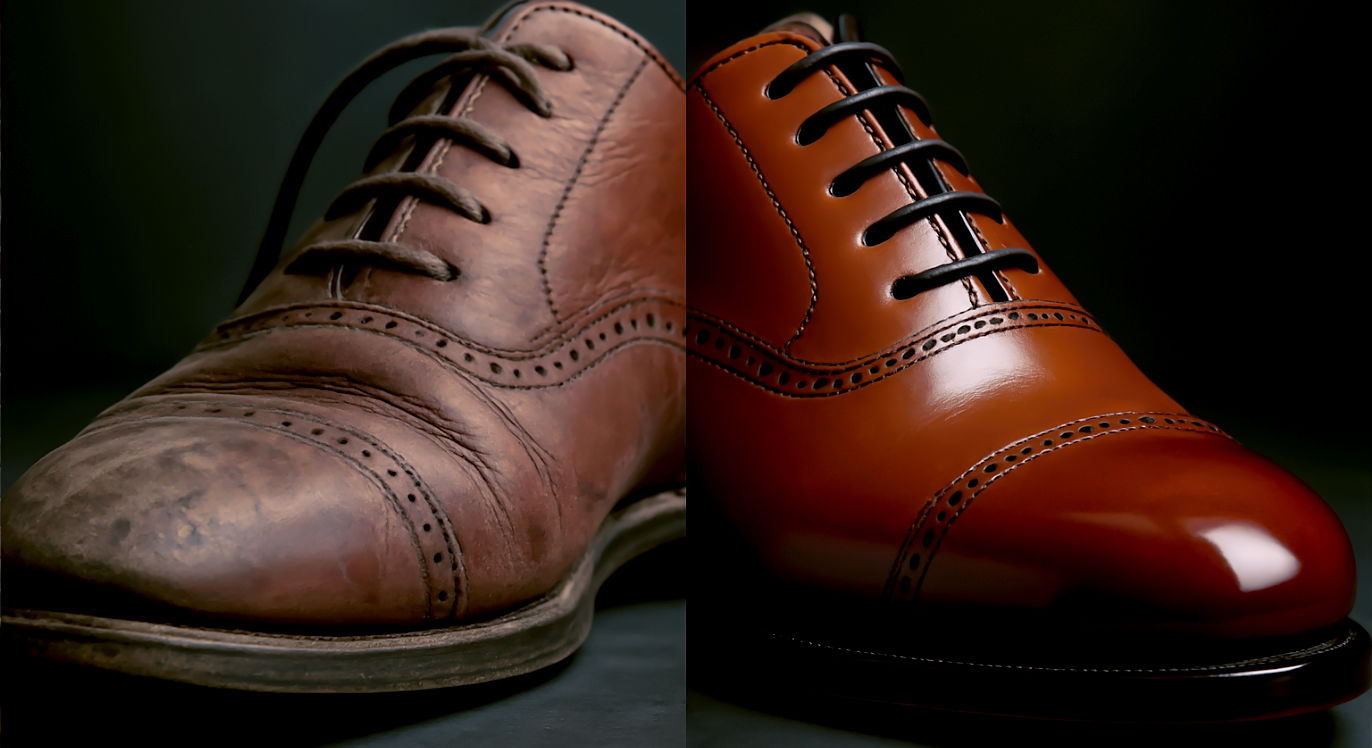
Mismatching Colors (Too Light/Too Dark)
The most common mistake is pairing tan Oxfords with outfits where the color balance is off. Avoid pairing them with a jet black suit for formal occasions; the contrast is usually too harsh. Similarly, be careful not to wear them with very light, almost white, trousers or suits, unless it’s a deliberate and carefully executed summer aesthetic, as they can sometimes appear too heavy. Strive for harmonious contrasts rather than jarring ones.
Neglecting Proportions
Your shoes should complement the overall proportion of your outfit. Avoid wearing tan Oxfords, which are inherently sleek, with overly baggy or ill-fitting trousers. Wide-leg or extremely loose pants can overwhelm the refined silhouette of the Oxford, making your feet look disproportionately small. Opt for slim, straight, or slightly tapered trousers that maintain a clean line down to the shoe.
Over-Dressing for the Occasion
While tan Oxfords can elevate a casual look, there’s a limit. Don’t wear them with athletic wear, cargo shorts, or overly distressed jeans and graphic tees. They are still dress shoes, and forcing them into extremely casual contexts can make your outfit look confused or like you’re trying too hard. Always consider the dress code and the overall vibe of the event.
Poor Maintenance
Perhaps the most critical mistake is neglecting care. Scuffed, dusty, or unpolished tan Oxfords immediately undermine their “effortless style.” A well-chosen, well-styled shoe loses all its charm if it looks dirty or uncared for. Make sure your tan Oxfords are always clean, conditioned, and polished. It truly makes all the difference in presenting a polished appearance.
Conclusion: The Enduring Legacy of the Tan Oxford
The tan Oxford shoe is far more than just another item in your footwear collection. It’s a powerful statement piece, a testament to enduring style, and a true workhorse in a well-curated wardrobe. Its unique color provides a level of versatility that few other shoes can match, allowing it to transition seamlessly from formal settings to smart casual occasions with effortless grace.
A Versatile Foundation for Any Wardrobe
From brightening up a navy business suit to elevating dark denim, the tan Oxford offers an unparalleled ability to adapt. It serves as a foundational piece, providing a warm, sophisticated anchor for countless outfits. Investing in a quality pair means you’re not just buying shoes; you’re acquiring a versatile tool for personal expression, ensuring you’re always appropriately and impeccably dressed.
A Timeless Choice for the Discerning Individual
In a world of fleeting fashion trends, the tan Oxford remains steadfast, a symbol of classic elegance and understated confidence. It’s a choice for the individual who values craftsmanship, versatility, and a style that transcends seasons and fads. Embrace the tan Oxford, and you’ll unlock a new dimension of effortless sophistication in your personal style, proving that true elegance really is timeless.

